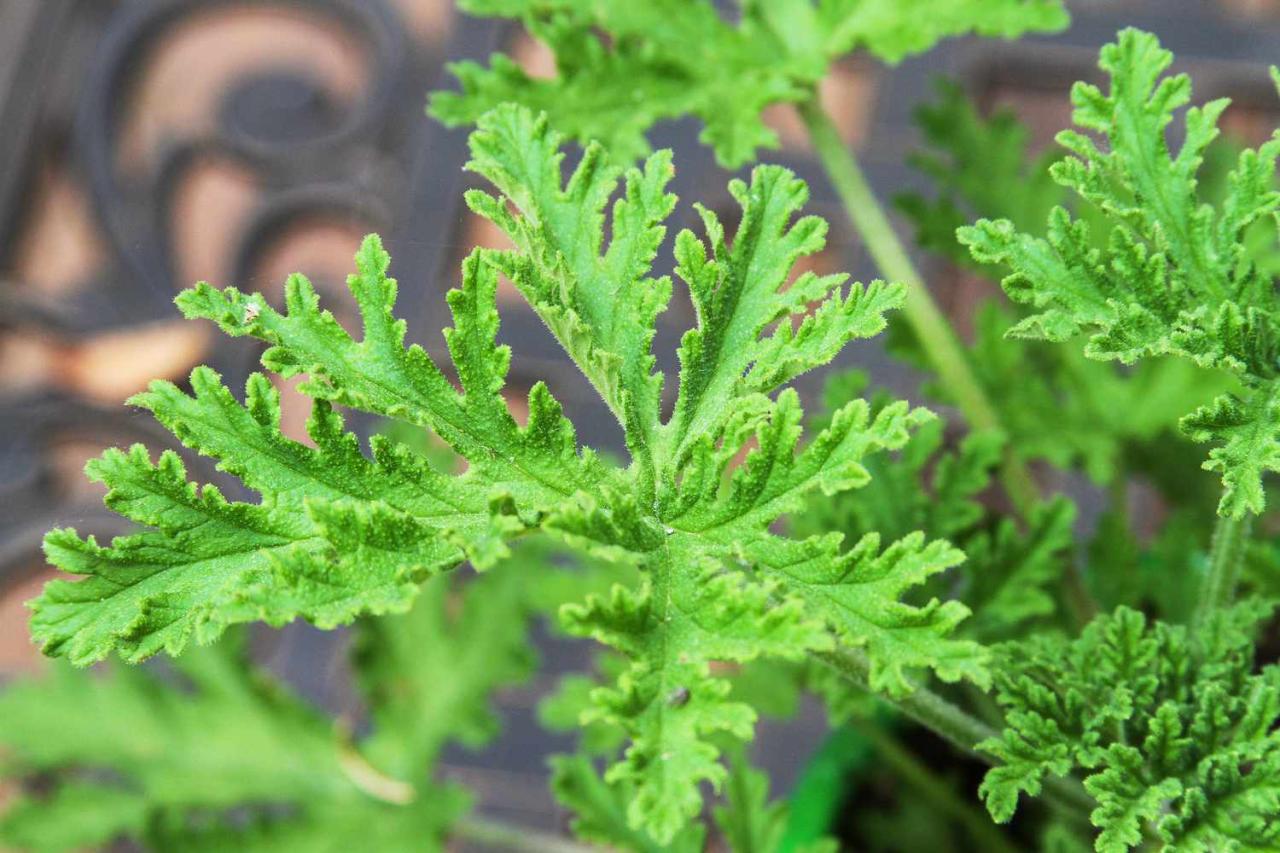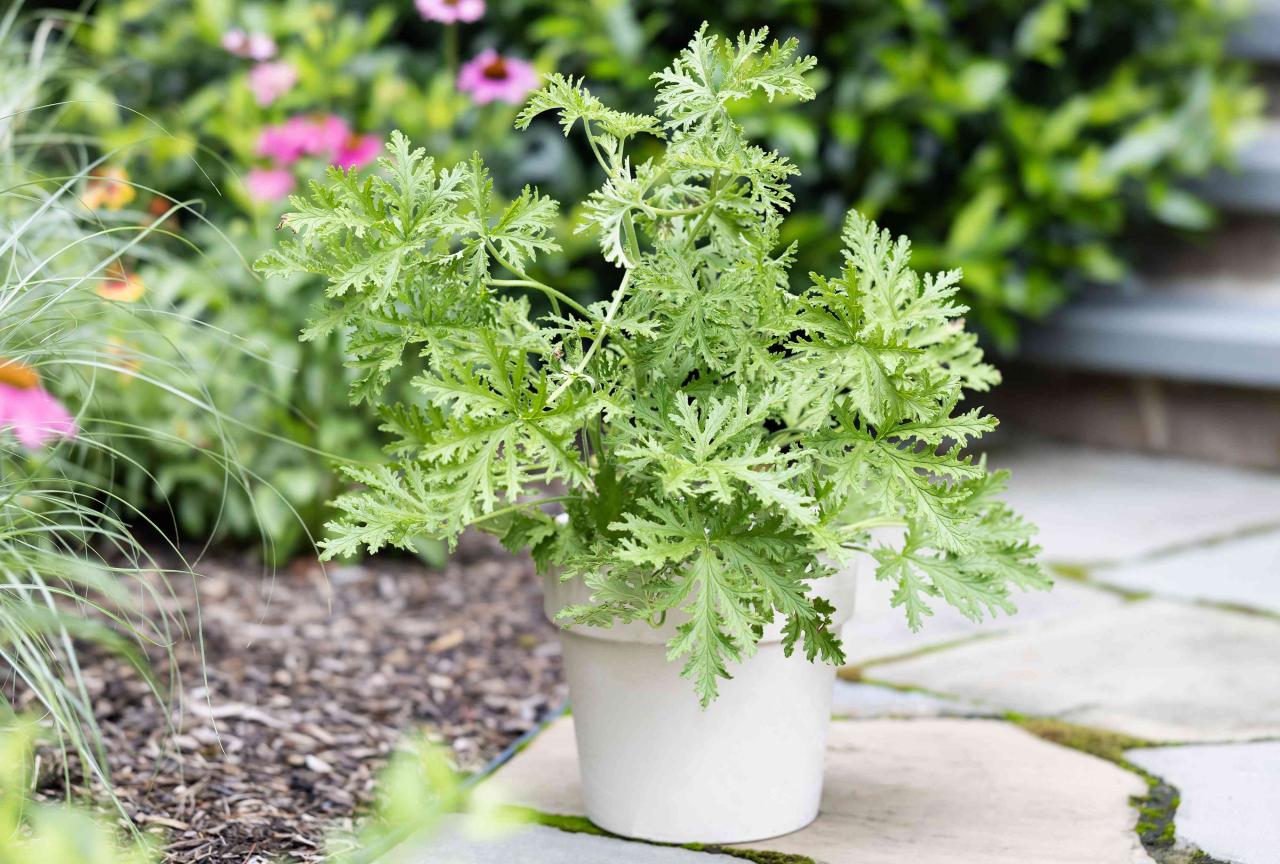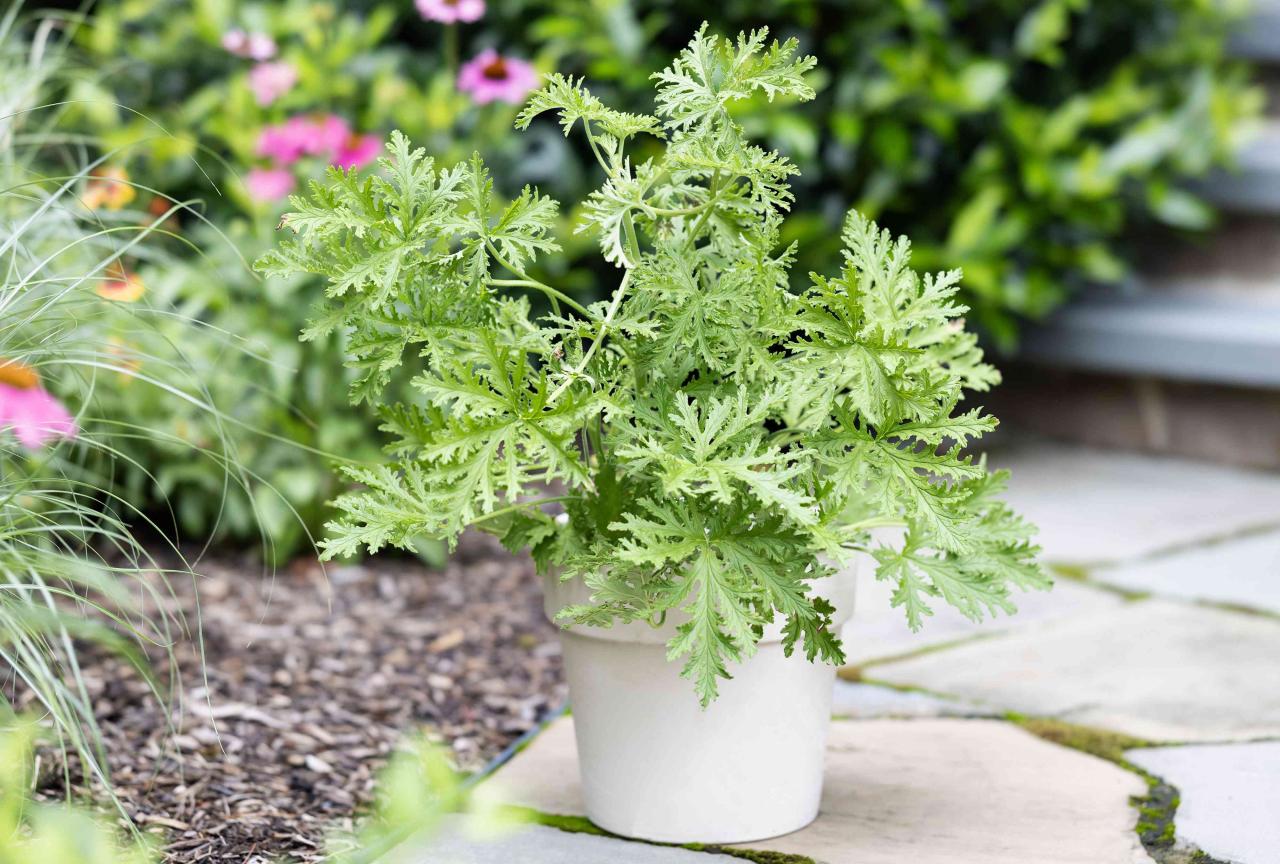How to Cultivate Citronella Plant: Tips for Achieving a Healthy and Effective Herb – Citronella, with its distinctive citrusy scent, is more than just a fragrant plant. It’s a versatile herb with a long history of use for its essential oil, insect repellent properties, and even culinary purposes.
This comprehensive guide will equip you with the knowledge and techniques to cultivate healthy and thriving citronella plants, maximizing their benefits and adding a touch of nature’s fragrance to your garden.
From selecting the right variety to understanding the ideal growing conditions, we’ll cover everything you need to know about successfully growing citronella. We’ll delve into the intricacies of planting, propagation, and caring for your citronella plants, ensuring they flourish and reward you with their delightful aroma and numerous benefits.
Introduction to Citronella Plants: How To Cultivate Citronella Plant: Tips For Achieving A Healthy And Effective Herb
Citronella plants, scientifically known asCymbopogon* species, are a group of perennial grasses native to Southeast Asia and tropical regions. They are widely recognized for their distinctive lemony-citrus scent, which is derived from the essential oil extracted from their leaves.Citronella plants have a rich history of use, spanning from traditional medicine to modern applications.
They are particularly renowned for their insect-repelling properties, making them a popular choice for natural pest control.
Uses of Citronella Plants
Citronella plants are versatile and find application in various industries, including:
- Essential Oil Extraction:The primary use of citronella plants is for the extraction of citronella oil, a valuable ingredient in perfumes, cosmetics, and aromatherapy. The oil is extracted through steam distillation, where the leaves are heated with steam, releasing the essential oil.
This oil is known for its distinct lemony-citrus fragrance and its potential health benefits.
- Insect Repellent:Citronella oil is a natural insect repellent, particularly effective against mosquitoes. The oil’s strong scent is known to deter mosquitoes and other insects, making it a popular ingredient in candles, diffusers, and insect repellent sprays. The active compounds in citronella oil, such as citronellal and geraniol, are believed to interfere with the mosquito’s olfactory system, preventing them from locating their host.
- Culinary Purposes:In some cultures, citronella leaves are used in cooking to impart a distinct citrus flavor to dishes. They are often used in Southeast Asian cuisine, particularly in Thai and Vietnamese dishes, where they are added to curries, soups, and stir-fries.
However, it’s important to note that the leaves should be used sparingly, as their strong flavor can overpower other ingredients.
Health Benefits of Citronella Plants
Citronella plants are known for their potential health benefits, primarily due to the presence of essential oil with various properties:
- Mosquito Repellent:Citronella oil is widely recognized for its mosquito-repelling properties. The oil’s strong scent, particularly citronellal and geraniol, is believed to interfere with the mosquito’s olfactory system, making it difficult for them to locate their host. Studies have shown that citronella oil can effectively reduce mosquito bites and potentially prevent the transmission of mosquito-borne diseases.
- Antimicrobial Properties:Citronella oil exhibits antimicrobial properties, meaning it can inhibit the growth of bacteria and fungi. Studies have shown that citronella oil can be effective against various bacteria, including -Staphylococcus aureus* and -Escherichia coli*. Its antifungal properties have also been demonstrated, making it potentially useful in treating skin infections and promoting wound healing.
- Anti-inflammatory Effects:Citronella oil has been shown to possess anti-inflammatory properties. This suggests that it may be beneficial in reducing inflammation associated with conditions like arthritis and muscle soreness. However, further research is needed to fully understand its potential therapeutic applications.
Growing Conditions for Citronella

Citronella plants thrive in warm, sunny environments, and understanding their ideal growing conditions is crucial for their successful cultivation. These conditions include optimal sunlight exposure, soil type, and temperature preferences.
Cultivating citronella plants is a rewarding endeavor, offering a natural and effective way to deter pesky insects. For a comprehensive guide on growing and utilizing this versatile herb, delve into The Complete Citronella Plant Guide: Tips for Growing and Using This Pest-Repelling Herb.
Armed with the right knowledge, you’ll be well on your way to cultivating healthy and effective citronella plants that keep unwanted bugs at bay.
Sunlight Requirements
Citronella plants are sun-loving and require at least six hours of direct sunlight daily for optimal growth. They can tolerate partial shade, but their growth may be stunted, and their oil production may be reduced. In regions with hot summers, it is advisable to provide some afternoon shade to prevent scorching of the leaves.
Soil Type, How to Cultivate Citronella Plant: Tips for Achieving a Healthy and Effective Herb
Citronella prefers well-drained, fertile soil with a slightly acidic pH (6.0 to 6.5). Poorly drained soil can lead to root rot and other diseases.
Temperature Preferences
Citronella plants are tropical in origin and thrive in warm temperatures. They can tolerate mild frost, but prolonged exposure to freezing temperatures can damage or kill the plant. Ideally, citronella plants should be grown in areas with temperatures between 60°F and 85°F (15°C and 29°C).
Importance of Proper Drainage
Proper drainage is essential for citronella plants. Overwatering can lead to waterlogged soil, which can suffocate the roots and create an environment conducive to fungal diseases. To ensure good drainage, select a planting site with well-drained soil or amend the existing soil with organic matter like compost or peat moss.
Preparing the Soil for Planting Citronella
Before planting citronella, it is essential to prepare the soil adequately. This involves:
- Testing the soil pH:Using a soil testing kit, determine the pH of your soil. If the pH is too high, amend it with acidic materials like sulfur or peat moss. If the pH is too low, amend it with lime.
- Adding organic matter:Incorporate compost or other organic matter into the soil to improve drainage, aeration, and nutrient content. Organic matter also helps retain moisture and provides essential nutrients for plant growth.
- Loosening the soil:Before planting, loosen the soil to a depth of 12 inches. This allows for proper root development and drainage.
Planting and Propagating Citronella
Citronella plants can be propagated through seeds or cuttings. Planting and propagating citronella successfully requires selecting healthy plant material and understanding the optimal conditions for growth.
Planting Citronella Seeds
Citronella seeds are small and require specific conditions to germinate. It is crucial to plant them in a warm and humid environment with sufficient light.
- Sow seeds indoors:Start seeds indoors in a seed tray filled with a seed-starting mix. Keep the soil consistently moist and maintain a temperature of 70-75°F (21-24°C). Cover the seeds with a thin layer of soil, approximately 1/4 inch deep.
- Provide adequate light:Place the seed tray in a sunny location or under grow lights. Seeds typically take 1-2 weeks to germinate.
- Thin seedlings:Once seedlings have developed a few true leaves, thin them out to give each plant enough space to grow.
- Transplant outdoors:After the last frost, harden off the seedlings by gradually exposing them to outdoor conditions for a few days. Transplant them into the garden or containers when they are 4-6 inches tall.
Selecting Healthy Seedlings or Cuttings
Selecting healthy seedlings or cuttings is essential for successful propagation. Healthy plant material will have strong roots, vibrant green leaves, and no signs of disease or pests.
- Choose vigorous seedlings:Select seedlings with healthy roots and stems. Avoid seedlings that are spindly or have wilted leaves.
- Inspect for pests and diseases:Examine the seedlings for any signs of pests or diseases, such as aphids, spider mites, or fungal infections.
- Choose cuttings from healthy plants:When propagating from cuttings, select cuttings from healthy, mature plants. Cuttings should be 4-6 inches long and taken from the stem tips.
Transplanting Citronella Plants
Once the seedlings are large enough, or you have prepared cuttings, transplanting them into the garden or containers is crucial for their growth and development.
- Prepare the planting site:Choose a sunny location with well-drained soil. Amend the soil with compost or other organic matter to improve drainage and fertility.
- Dig a hole:Dig a hole that is twice as wide and as deep as the root ball of the seedling or cutting.
- Place the plant in the hole:Gently place the plant in the hole, ensuring that the root ball is level with the soil surface. Backfill the hole with soil and gently firm it around the plant.
- Water thoroughly:Water the newly transplanted plant deeply to settle the soil and help the roots establish.
Caring for Citronella Plants
Providing the right care is essential for ensuring your citronella plants thrive and produce their potent oil. This section will cover the key aspects of caring for your citronella plants, from watering and fertilizing to managing pests and diseases.
Watering Citronella Plants
Consistent watering is crucial for citronella plants, especially during their initial growth stages. Water them deeply but infrequently, allowing the top inch of soil to dry out between waterings. Overwatering can lead to root rot, a serious issue that can damage or kill your plants.
Fertilizing Citronella Plants
Citronella plants benefit from regular fertilization, particularly during the growing season. Use a balanced liquid fertilizer diluted to half strength every 2-3 weeks. Avoid over-fertilizing, as it can lead to leaf burn and stunted growth.
Weeding and Mulching
Weeding around citronella plants is important for preventing competition for nutrients and water. Mulching with organic materials like wood chips or shredded bark helps retain moisture, suppress weeds, and regulate soil temperature.
Pest Management
Citronella plants are generally resistant to pests, but they can be susceptible to aphids, spider mites, and whiteflies. Regularly inspect your plants for signs of infestation. You can use insecticidal soap or neem oil to control these pests.
Disease Management
Citronella plants are susceptible to fungal diseases like leaf spot and rust. Good air circulation and avoiding overhead watering can help prevent these diseases. If you notice signs of disease, remove infected leaves and consider using a fungicide.
Harvesting and Using Citronella
Citronella is harvested for its essential oil, which is used in various applications, including insect repellent, aromatherapy, and fragrance. The optimal time for harvesting citronella leaves for essential oil extraction is when the plants are in full bloom, typically during the summer months.
This is when the leaves contain the highest concentration of essential oil.
Methods for Harvesting Citronella
The method of harvesting citronella leaves depends on the desired outcome and the scale of the operation. For small-scale harvesting, hand-cutting the leaves with a sharp knife or scissors is sufficient. This method allows for selective harvesting of the leaves that are ready for extraction.
Cultivating citronella plants is a rewarding experience, providing a natural mosquito repellent and a fragrant addition to your garden. While citronella is known for its pest-repelling properties, another Asian herb, kaffir lime leaf, offers a unique culinary dimension. How to Use Kaffir Lime Leaf for Authentic Asian Flavors: Expert Tips and Recipes provides a comprehensive guide to incorporating this aromatic ingredient into your dishes.
Like citronella, kaffir lime leaf thrives in warm climates, making them ideal companions in your herb garden.
For larger-scale operations, mechanical harvesting methods such as mowing or using a forage harvester are often employed. These methods are more efficient but may damage the plants and reduce the quality of the harvested leaves.
Drying and Storing Citronella Leaves
After harvesting, citronella leaves should be dried to preserve their essential oil content and prevent spoilage. Drying can be achieved through air drying, sun drying, or using a dehydrator. Air drying involves spreading the leaves in a well-ventilated area, away from direct sunlight.
Sun drying involves exposing the leaves to direct sunlight, but it can lead to degradation of the essential oil. Dehydrators offer a more controlled drying process and are particularly useful for large-scale operations.Once dried, citronella leaves can be stored in airtight containers in a cool, dark place for up to one year.
Tips for Achieving a Healthy and Effective Citronella Plant

Cultivating a healthy and effective citronella plant requires a combination of proper care and techniques. This includes understanding the plant’s needs, providing the right environment, and implementing strategies to maximize its growth and essential oil production.
Pruning Citronella Plants
Regular pruning is essential for promoting healthy growth and maximizing essential oil production.
- Deadheading:Regularly remove spent flower heads to encourage the plant to focus its energy on producing more leaves, which contain the highest concentration of citronella oil.
- Trimming:Trim back any overgrown or leggy stems to maintain a compact and bushy form. This allows for better air circulation and sunlight penetration, preventing fungal diseases and promoting healthy growth.
- Pinching Back:Pinch back the tips of new growth to encourage branching and a fuller plant. This results in a bushier plant with more leaves, leading to increased essential oil production.
Fertilizing Citronella Plants
Citronella plants benefit from regular fertilization to ensure adequate nutrient supply for optimal growth and essential oil production.
- Organic Fertilizers:Utilize compost, manure, or fish emulsion as natural sources of nutrients. These fertilizers release nutrients gradually, promoting healthy and sustainable growth.
- Balanced Fertilizer:Apply a balanced fertilizer with a ratio of NPK (nitrogen, phosphorus, potassium) of 10-10-10 or 20-20-20. This provides a balanced supply of essential nutrients for optimal growth.
- Frequency:Fertilize every 4-6 weeks during the growing season, adjusting the frequency based on the plant’s growth rate and soil conditions.
Troubleshooting Common Problems
While citronella plants are generally hardy, they can be susceptible to certain problems. Recognizing and addressing these issues promptly is crucial for maintaining a healthy plant.
- Pests:Monitor for pests such as aphids, spider mites, or whiteflies. Treat infestations with insecticidal soap or neem oil, following product instructions.
- Diseases:Watch for signs of fungal diseases like leaf spot or rust. Ensure good air circulation, avoid overwatering, and treat affected areas with a fungicide.
- Nutrient Deficiencies:Yellowing leaves may indicate nutrient deficiencies. Address the issue by applying the appropriate fertilizer or amending the soil with compost.
Last Recap
Cultivating citronella plants is a rewarding experience that allows you to harness the power of nature for both practical and aesthetic purposes. By following the tips and techniques Artikeld in this guide, you can create a thriving citronella patch that not only deters pesky insects but also adds a touch of beauty and fragrance to your surroundings.
Whether you’re seeking a natural insect repellent, a source of essential oil, or simply a delightful addition to your garden, citronella offers a unique blend of benefits, making it a valuable and versatile herb to cultivate.
FAQ Summary
What are the best times of year to plant citronella?
The best time to plant citronella is during the spring or early summer when the soil has warmed up and the threat of frost has passed. However, you can also plant citronella in the fall in warmer climates.
Can I grow citronella indoors?
Yes, citronella can be grown indoors in a pot. It requires plenty of sunlight, so place it in a sunny window or under a grow light.
How do I know if my citronella plant is getting enough water?
The soil should feel moist but not soggy. If the soil is dry to the touch, it’s time to water your plant.
What are the signs of overwatering citronella?
Overwatering can lead to root rot. Signs of overwatering include yellowing leaves, wilting, and a musty odor from the soil.
